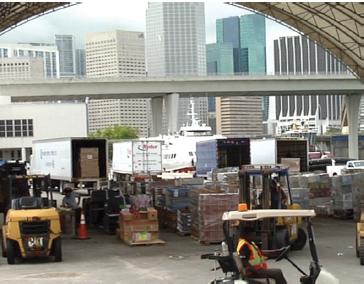Sandwiched between mass-market cruise line players such as Carnival and Disney, and luxury cruise lines such as
Question:
Sandwiched between mass-market cruise line players such as Carnival and Disney, and luxury cruise lines such as Crystal Cruises, Celebrity is making a name for itself in the “premium” market, offering both an upscale experience and premium meals at “an intelligent price.”
Among the many features and services of a premium cruise line is food quality. It is critical to the success of the cruise experience and the number-one reason customers return. Dining facilities must be managed to achieve the highest possible standards. Celebrity operates a variety of specialty restaurants in addition to the main buffet and dining rooms. The restaurants serve 3 meals a day, handling as many as 2,500 guests at dinner alone.
Celebrity uses restaurant and menu data collected over the past 10 years for every item on the menu to forecast food supplies for each sailing, be it 3, 4, 7, 10, or 12 days, or longer.
The quantity of food served on a typical 7-day Celebrity cruise is massive, as indicated in the following table. (The average cruise guest consumes 4.5 meals per day.) This is where Celebrity’s outstanding supply chain and inventory management come into play. At the beginning of most cruises, the ship’s food storage areas are stacked to the forecasted limit and, by the end, the goal is to be “down to two bananas,” as one executive humorously states.
A Celebrity ship is “like a small upscale city that moves all the time,” says Associate VP for Supply Chain Management and Sourcing, Paul Litvinov. Tens of thousands of different items (SKUs) are stocked for each sailing of ships all over the world, but crews have only 8 hours to provision them during the period when disembarking passengers leave (usually 7–9 a.m.) and embarking passengers board (3–5 p.m.).
Strategic inventory planning and supply chain decisions are made at Celebrity’s Miami headquarters by Litvinov and his staff. Celebrity keeps long-term contracts with some suppliers (such as Coca-Cola and Starbucks) but typically contracts for the short term for items such as meats, fish, and produce, whose prices are more volatile.
With more than a dozen ships scattered around scores of ports worldwide, Litvinov often buys frozen food supplies stateside and sends 6 to 10 cargo containers by commercial shippers to stock cruises departing Europe or Asia. Despite the delays stemming from 30- to 60-day shipping routes, Celebrity’s cost analysis determines this to be the optimum strategy for many products. However, dairy and produce products are always sourced locally.
Tactical inventory decisions are made by the ship’s inventory manager and his or her 6- to 9-member staff. This group is responsible for inspecting all foods being loaded at the start of each cruise, as well as stowing and managing the supplies on board. Inspection includes sampling all produce to make sure it is perfectly ripe and not bruised or wilted. Celebrity operates a computerized stock management system that allows goods to be controlled accurately. Inventory in the bars and storerooms can be easily checked to ensure there are no shortages or discrepancies.
With more than $100 million a year in food and beverage purchases, Celebrity has strong buying power. It carefully vets vendors in the U.S. and at each port where supplies are loaded.

Discussion Questions
1. What inventory adjustment might Celebrity make to prepare for an extreme event such as a hurricane or mechanical failure while at sea?
2. What inventory management techniques seen in this chapter could be used at Celebrity?
3. How should a cost analysis be performed to determine whether to buy at a foreign port or to ship supplies from Celebrity’s U.S. base in Florida?
4. In many respects, the food inventory decision for each Celebrity cruise matches the single-period inventory model described in this chapter. Consider the decision about chicken. Suppose that Celebrity purchases chicken in bulk for $0.80 per pound, and any chicken left over after a cruise is donated to local food banks. Management estimates that a shortage penalty of $1.00 per pound is incurred due to lost customer goodwill from unsatisfied demand. If chicken demand for a 7-day cruise is normally distributed with a mean of 3,000 pounds and a standard deviation of 200 pounds, how many pounds should be brought onto the ship?
Step by Step Answer:

Principles Of Operations Management Sustainability And Supply Chain Management
ISBN: 9780135173930
11th Edition
Authors: Jay Heizer, Barry Render, Chuck Munson





